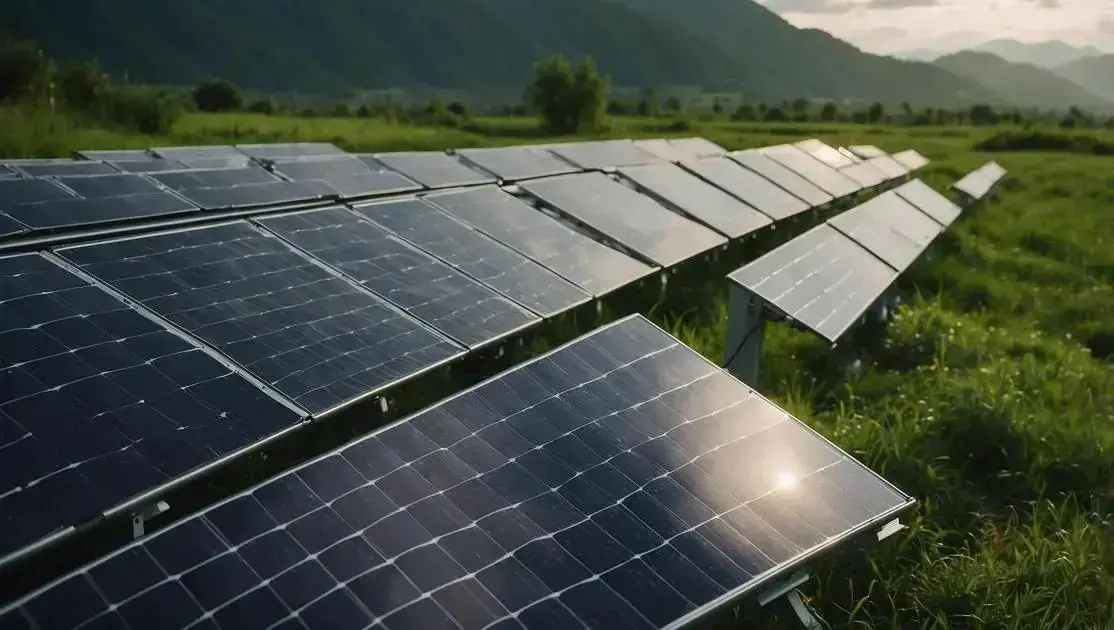Satellite Operations play a pivotal role in connectivity across the globe. From enhancing communication to providing crucial navigation support, understanding the intricacies of these operations is essential for grasping how technology shapes our world today. In this article, we will delve into various aspects of satellite operations, exploring their significance, challenges, and future advancements.<\/p>
Table of Contents
ToggleUnderstanding Satellite Operations
Understanding Satellite Operations is key to appreciating how satellites function and contribute to our daily lives. These operations encompass the entire lifecycle of a satellite, from development to deployment and ongoing management.
In the early stages, satellite operations begin with design and engineering. Engineers must ensure that every component can withstand the harsh conditions of space. Projects often involve thorough testing and simulations to prepare for potential challenges.
Launch Phase
Once a satellite is ready, it undergoes the launch phase. This critical step involves transporting the satellite to the launch site, integrating it with the rocket, and launching it into orbit. The launch’s success is vital as it sets the stage for all operational activities post-launch.
Orbit Operations
Following launch, the satellite enters its designated orbit. Here, satellite operators monitor its performance constantly, making adjustments as needed to maintain its trajectory. These operations include controlling altitude, orientation, and speed to ensure optimal functionality.
Data Management
Satellite operations also involve data management. Satellites gather vast amounts of information, which must be processed and transmitted back to Earth. Operators use sophisticated software to analyze this data for various applications, including weather forecasting, environmental monitoring, and communication.
Maintenance and Troubleshooting
Maintenance and troubleshooting are essential components of satellite operations. As satellites age, they may experience technical problems. Operators must quickly diagnose these issues and implement solutions, often relying on automated systems or sending commands from ground stations.
End-of-Life Procedures
When a satellite reaches the end of its operational life, specific procedures must be followed. Operators manage its decommissioning, which can include moving the satellite to a graveyard orbit or safely deorbiting it to minimize space debris.
Overall, understanding satellite operations gives us insight into the remarkable technology that supports various aspects of modern living, especially in an era of increasing solar activity where these systems face unique challenges.
The Evolution of Satellite Technology
Satellite technology has come a long way since its inception. The journey began with the launch of Sputnik 1 in 1957, the first artificial satellite to orbit Earth. This groundbreaking event marked the start of the space age and paved the way for further advancements in satellite technology.
Throughout the 1960s and 1970s, satellites were primarily used for military and scientific purposes. Communication satellites like Telstar (1962) demonstrated the potential for global communication, allowing for the first live broadcasts from one continent to another. This era showcased the importance of satellites in weather forecasting, Earth observation, and scientific research.
Commercial Advancements
The 1980s saw a boom in commercial satellite technology. Companies began to recognize the value of satellite communications for businesses and consumers. The introduction of satellite television changed how people consumed media, bringing live content directly into homes. This decade also birthed the first mobile satellite phones.
Technological Innovations
The 1990s and 2000s were characterized by significant advancements in satellite technology. The development of smaller, more efficient satellites allowed for miniaturization and cost reduction. The introduction of GPS satellites revolutionized navigation, enabling accurate location services for everyone from drivers to hikers.
Modern Era
Today, we witness an explosion in the number of satellites in orbit. The rise of CubeSats has made space more accessible to universities and small companies, driving innovation in satellite design and function. These small satellites are often used for research, technology demonstrations, and even commercial applications.
Impact of Solar Activity
In the context of solar activity surges, advancements in satellite technology also focus on enhancing resilience against solar storms. Engineers design satellites with better shielding and improved tracking systems to monitor solar events, protecting sensitive equipment from potential damages caused by increased solar radiation.
Overall, the evolution of satellite technology has significantly enhanced our capabilities. As advancements continue, the need to manage these technologies effectively, especially in the face of solar activity, remains crucial for ongoing success in the field.
Key Components of Satellite Systems
Satellite systems are complex and consist of several key components. Each part plays a vital role in ensuring that the satellite functions properly and fulfills its designated mission.
One of the primary components is the payload, which houses the instruments and equipment necessary for the satellite’s intended purpose. This could include cameras for imaging, sensors for environmental monitoring, or communication devices for data transmission.
Power Supply
Another essential component is the power supply. Most satellites use solar panels to capture energy from the sun. These panels convert sunlight into electricity, which powers the satellite’s onboard systems. Having a reliable power source is crucial, especially during periods of solar activity.
Communication System
Every satellite is equipped with a communication system. This system allows the satellite to send and receive signals to and from ground stations on Earth. It typically includes antennas and transponders that facilitate effective data exchange.
Attitude Control System
The attitude control system is responsible for maintaining the satellite’s orientation in space. This system uses gyroscopes, thrusters, and magnetometers to ensure that the satellite is properly aligned to collect data and communicate with ground stations.
Structure and Thermal Control
The structure of the satellite is designed to protect all of its components from harsh space conditions. It provides necessary support and ensures durability. Additionally, a thermal control system manages the temperature of the satellite. It helps maintain optimal operating conditions for sensitive instruments.
Propulsion System
Some satellites also feature a propulsion system. This system allows the satellite to maneuver within its orbit, enabling course adjustments and position changes as required. Propulsion can be achieved using chemical or electric thrusters.
By understanding these key components of satellite systems, we gain insight into how they operate and the challenges they face, particularly during periods of increased solar activity that can impact their performance.
Types of Satellite Operations
Various types of satellite operations exist, each designed to fulfill specific functions and serve diverse purposes. Understanding these operations is essential for comprehending how satellites contribute to our daily lives.
Earth Observation operations are among the most significant types. Satellites in this category collect data about Earth’s surface and atmosphere. They are used for monitoring climate change, natural disasters, and agricultural activities. The images and data obtained help scientists and government agencies make informed decisions.
Communication Operations
Communication operations involve satellites that relay information between Earth-bound stations. This includes television broadcasting, internet services, and phone communications. These satellites are crucial for connecting people across vast distances and play a significant role in global communication networks.
Navigation Operations
Another important type is navigation operations. GPS satellites provide critical location information and are used for various applications, from guiding vehicles to aiding in outdoor recreational activities. Understanding navigation satellites is vital for modern transportation systems.
Scientific Research Operations
Scientific research operations are conducted by satellites equipped with specialized instruments. These satellites explore outer space, study celestial bodies, and gather data on cosmic phenomena. They assist scientists in understanding the universe and making groundbreaking discoveries.
Weather Monitoring
Weather satellites are vital for weather monitoring. They observe atmospheric conditions and assist meteorologists in predicting weather patterns. Real-time data from these satellites helps communities prepare for severe weather events, such as hurricanes or storms.
Military Operations
Military operations utilize satellites for reconnaissance, surveillance, and communication. These satellites provide strategic information crucial for national security. They help military forces maintain situational awareness and track potential threats.
Overall, the variety of satellite operations demonstrates how satellites are integral to many sectors, and understanding their roles is essential, especially as solar activity can influence their performance in space.
The Role of Satellite Ground Stations
The role of satellite ground stations is crucial in the operation of satellite systems. These facilities allow for communication between satellites in orbit and users on Earth.
Ground stations serve several important functions. First, they are equipped with large antennas that transmit and receive data to and from satellites. These antennas must be precisely aligned with the satellite for effective communication.
Data Transmission
One of the key roles of ground stations is data transmission. When a satellite collects information, such as images or sensor data, it sends this information back to the ground station. The ground station processes this data and delivers it to end users, such as governments or private companies.
Control and Monitoring
Ground stations are also responsible for control and monitoring of satellites. Operators use ground stations to send commands to satellites, including adjustments to their orbits and settings. This ensures that satellites remain operational and on course, especially during solar activity that may disrupt their functions.
Tracking
Tracking is another essential function of ground stations. They monitor satellite positions and velocities, providing accurate location data. This is particularly important for navigation satellites, which require precise tracking to deliver reliable services.
Network Coordination
Ground stations also coordinate networks of satellites. When multiple satellites operate together in a system, ground stations manage these connections, ensuring seamless communication across the network.
In summary, satellite ground stations are vital for maintaining communication, control, and coordination of satellite operations. Their functionality is especially crucial as they help mitigate the effects of solar activity on satellite systems.
Challenges in Satellite Operations
Several challenges in satellite operations can impact the effectiveness and safety of satellite systems. Addressing these challenges is crucial, especially during periods of increased solar activity.
One of the primary challenges is space debris. As more satellites are launched, the amount of debris in orbit grows. This debris poses a risk of collision with operational satellites, which can result in damage or total loss of the satellite.
Solar Activity Effects
Solar activity, such as solar flares, can significantly affect satellite operations. Increased radiation can disrupt satellite communications, degrade instruments, and even harm astronauts in space. Operators must continuously monitor solar activity to anticipate and mitigate these risks.
Technical Malfunctions
Technical malfunctions present another challenge. Satellites rely on complex systems and electronics that can fail due to environmental conditions in space. Operators must be prepared to troubleshoot issues from the ground, often dealing with limited communication capabilities.
Increased Operational Costs
Maintaining and operating satellites can be expensive. With rising operational costs, such as insurance against space debris or enhancing technology to handle solar activity effects, managing budgets efficiently becomes a significant challenge.
Regulatory Issues
Regulatory issues are a critical factor in satellite operations. Different countries have various regulations regarding satellite launches and operations. Navigating these rules can complicate international missions and collaboration among different entities.
Weather Conditions
Weather conditions on Earth can also affect satellite operations. Heavy rainfall, storms, and atmospheric disturbances can impair the signals sent to and from ground stations, affecting data collection and communication.
By understanding and addressing these challenges, satellite operators can enhance the reliability and effectiveness of their systems, particularly when facing potential disruptions from solar activity.
Future Trends in Satellite Management
Future trends in satellite management are shaped by advancements in technology and an increasing demand for satellite services. As the number of satellites in orbit grows, improved management practices will be essential to ensure efficiency and reliability.
One of the significant trends is the rise of autonomous satellite operations. With AI and machine learning, satellites can increasingly make decisions based on real-time data. This reduces the need for constant human intervention, allowing for more agile responses to changes in space conditions or mission requirements.
Enhanced Collaboration
Another trend is the move toward enhanced collaboration among space agencies and private companies. As space becomes more crowded, shared data and joint missions can improve safety and maximize resources. Collaborative approaches can lead to better management of space debris and more efficient satellite operations.
Advanced Data Analytics
Advanced data analytics will also play a crucial role in satellite management. By analyzing data from multiple satellites, operators can predict trends, optimize performance, and improve decision-making. This can lead to better operational efficiency and reduced costs.
Focus on Sustainability
The emphasis on sustainability is growing. New technologies are being developed to address space debris, such as satellite deorbiting methods and systems to remove existing debris. Sustainable practices will be essential to protect the space environment for future generations.
Space Traffic Management
Space traffic management is becoming increasingly important as more satellites are launched. Developing systems to track and manage satellite movements will help prevent collisions and ensure the safety of both operational spacecraft and space exploration missions.
In summary, the future of satellite management will involve a blend of innovative technologies and sustainable practices, addressing the challenges posed by growing satellite populations and changes in space conditions, including those from solar activity.
Satellite Operations and Space Debris
Satellite operations and space debris are closely interconnected. As the number of satellites in orbit increases, so does the amount of space debris. This debris can pose significant risks to both operational satellites and the safety of future missions.
Space debris refers to defunct satellites, spent rocket stages, and fragments from collisions or disintegration. These objects travel at very high speeds, making even small pieces potentially dangerous due to the energy they can unleash upon impact.
Impact on Satellite Operations
Satelite operators must constantly monitor the surrounding environment to avoid collisions caused by space debris. When a potential collision is detected, operators may need to perform a collision avoidance maneuver. This adjustment requires precise calculations and quick actions to change a satellite’s trajectory and prevent an accident.
Increasing Awareness
Awareness of the space debris problem is growing. Organizations like NASA and the European Space Agency (ESA) actively track debris and provide data to satellite operators. This information helps improve safety and planning for future launches.
Mitigation Strategies
Several mitigation strategies are being employed to reduce the generation of new debris. These include designing satellites to deorbit at the end of their missions and ensuring that rocket stages do not leave excessive debris in orbit.
Future Technologies
Future technologies are also being developed to tackle the space debris challenge. Concepts such as debris removal systems and new tracking technologies aim to manage and reduce existing debris in orbit. These advancements could ensure safer environments for satellite operations.
Understanding the impacts of space debris on satellite operations is essential, particularly as solar activity can influence satellite behavior and increase vulnerability to debris collisions. Addressing these challenges is crucial for the future of space exploration and communication.
Impact of Satellite Operations on Communication
The impact of satellite operations on communication is profound and far-reaching. Satellites play a vital role in connecting people around the globe, enabling reliable communication services.
Communication satellites send and receive signals that allow for voice calls, television broadcasts, and internet access. Companies like SES and Intelsat operate fleets of satellites that facilitate these essential services.
Global Connectivity
One of the key ways satellite operations impact communication is through global connectivity. Unlike terrestrial networks, satellite communication can reach remote areas where fiber optics or other forms of infrastructure are not feasible. This connectivity can provide opportunities for education, commerce, and emergency services.
Real-Time Data Transmission
Satellites enable real-time data transmission across vast distances. This capability is crucial for applications like weather forecasting, disaster response, and news broadcasting. Information can be relayed instantly, ensuring that people stay informed and safe.
Challenges During Solar Activity
However, the impact of satellite operations on communication is not without its challenges. Solar activity can disrupt satellite signals, leading to communication failures during solar flares or geomagnetic storms. Operators must implement strategies to minimize these disruptions to maintain service continuity.
Advancements in Technology
Ongoing advancements in technology also influence this impact. New satellite designs, such as high-throughput satellites (HTS), provide more bandwidth and faster internet speeds. These innovations help meet the growing demand for enhanced communication services.
By understanding the impact of satellite operations on communication, we can appreciate how these systems improve daily life and the potential challenges they face, particularly from solar activity.
Real-World Applications of Satellite Technology
Real-world applications of satellite technology are diverse and impactful. Satellites are used in many sectors, enhancing our daily lives and improving various industries.
One notable application is in weather forecasting. Meteorological satellites collect data about atmospheric conditions, such as temperature, humidity, and wind speed. This information helps scientists predict weather patterns and provide timely warnings for severe storms, ensuring public safety.
Disaster Management
Satellites also play a crucial role in disaster management. During natural disasters like hurricanes or earthquakes, satellites can monitor the affected areas. They provide images and data that help emergency responders assess damage, plan relief efforts, and coordinate rescue operations.
Global Positioning Systems (GPS)
GPS technology relies on satellites to provide precise location services. This has applications in navigation for vehicles, airplanes, and smartphones. GPS helps people find directions, manage fleet logistics, and enhance personal safety by enabling location sharing.
Agricultural Monitoring
In agriculture, satellite technology is used for monitoring crop health and land use. Farmers can access satellite imagery to assess plant growth, identify pests, and optimize irrigation. This data-driven approach improves yields and promotes sustainable practices.
Environmental Monitoring
Satellites also monitor environmental changes. They gather data about deforestation, pollution levels, and wildlife habitats. This information helps governments and organizations make informed decisions about conservation and environmental protection.
Overall, the real-world applications of satellite technology illustrate its critical role in modern society. As technology advances, we can expect even more innovative uses that enhance our understanding of the planet and improve quality of life.
The Future of Satellite Operations and Technology
Satellite technology has significantly impacted our daily lives, from enhancing communication and weather forecasting to monitoring environmental changes and supporting disaster management.
As the number of satellites increases, understanding the effects of solar activity on operations and the challenges presented by space debris becomes vital. Innovations in satellite design and collaboration among organizations will play essential roles in addressing these issues.
Real-world applications highlight the value of satellite technology across various sectors, demonstrating its ability to improve efficiency and foster sustainable practices. The future holds promising advancements that will expand the capabilities of satellite systems and their contributions to society.
In summary, recognizing the significance of satellites and their operations enables us to appreciate this crucial technology and its potential to transform industries for the better.
FAQ – Frequently Asked Questions About Satellite Operations
What role do satellites play in communication?
Satellites enable global communication by relaying signals for television, internet access, and telephone services, connecting people around the world.
How do satellites contribute to weather forecasting?
Meteorological satellites collect data on atmospheric conditions, helping scientists predict weather patterns and issue warnings for severe weather events.
What challenges do satellite operators face regarding space debris?
Operators must monitor space debris closely to avoid collisions, which can damage or destroy operational satellites and compromise their missions.
How do solar activity surges affect satellite functions?
Increased solar activity can disrupt communication signals and damage satellite electronics, requiring operators to take precautions to safeguard their systems.
What are the real-world applications of satellite technology?
Satellite technology is used in various sectors, including agriculture for crop monitoring, disaster management for emergency response, and GPS for navigation.
What advancements are being made to manage satellites better?
Innovations such as autonomous satellite operations, enhanced data analytics, and improved tracking systems are being developed to optimize satellite management.











